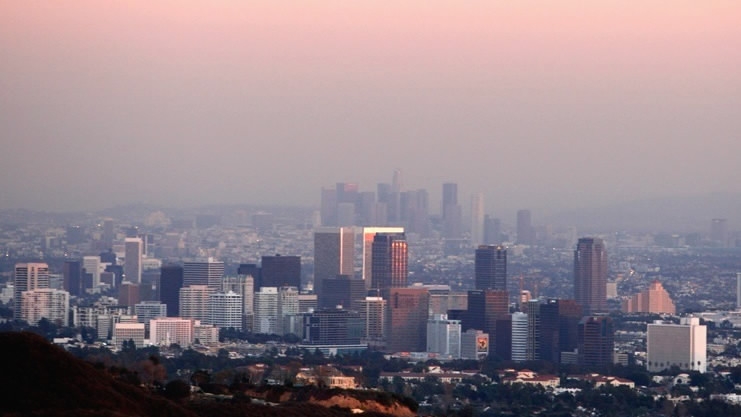
Tech & Sci
18:55, 08-Aug-2017
Certain 'cool roof' materials could slightly increase regional air pollution

Widespread installation of certain "cool roof" materials, typically light-colored and highly reflective, could slightly increase regional ozone and fine particulate pollution levels, a US study said Monday.
"Numerous scientific studies have established that replacing darker roofs and building materials with highly reflective materials can reduce peak daytime temperatures and mitigate the so-called 'urban heat island effect' where cities can be several degrees warmer than less-urbanized surrounding areas," according to the study published in the US journal Proceedings of the National Academy of Sciences.
However, the study also cautions that many cool-roofing materials reflect more ultraviolet light than their traditional counterparts, which increases the potential for ozone formation. "UV rays fuel smog formation on their way down to Earth. When cool roofs bounce UV rays back up into the atmosphere they create a "double-shot" of ozone formation."

"Cool roof" materials are typically light-colored and highly reflective. /VCG Photo
"Cool roof" materials are typically light-colored and highly reflective. /VCG Photo
The findings, conducted by scientists at the South Coast Air Quality Management District (SCAQMD) and the University of Southern California (USC), were based on meteorology and air quality computer models, measurements of cool roofing materials and detailed databases of rooftops of the South Coast Air Basin, a region of southern California encompassing Orange County and the urban portions of Los Angeles, San Bernardino, and Riverside counties.
"Cool roofs have many benefits including reduced energy use for cooling and mitigation of the significant health impacts of heat waves," Wayne Nastri, SCAQMD's executive officer, said in a statement.
"While the future, widespread use of certain kinds of cool roofing materials could slightly increase air pollution levels, we in no way want to discourage this technology. This study shows what needs to be done to help cool our cities and avoid increasing ozone levels as an unintended consequence."
As a result, the predicted ozone increase can be avoided if a comprehensive roofing standard is adopted to prevent the overall UV reflectance of newly-installed cool roofs from increasing.
However, the predicted small increase in PM2.5 levels is due to overall cooler surface temperatures resulting in weaker sea breezes and lower inversion layers, and will occur regardless of UV reflectance of roofing materials, according to the study.

Widespread use of certain kinds of cool roofing materials could slightly increase air pollution levels, said the researchers. /VCG Photo
Widespread use of certain kinds of cool roofing materials could slightly increase air pollution levels, said the researchers. /VCG Photo
"This study highlights the importance of considering how strategies used to mitigate one environmental issue can have co-benefits and/or unintended consequences on other environmental systems," said study author George Ban-Weiss, a professor of civil and environmental engineering at USC. "Whether air pollution improves or worsens from cool roof installations depends on a host of competing chemical and meteorological factors."
"Given that our study focuses on the Los Angeles basin, future research is needed to investigate how these competing processes dictate air pollution impacts in cities around California and beyond," Ban-Weiss said.
(Source: Xinhua)

SITEMAP
Copyright © 2018 CGTN. Beijing ICP prepared NO.16065310-3
Copyright © 2018 CGTN. Beijing ICP prepared NO.16065310-3